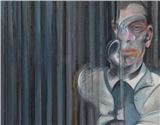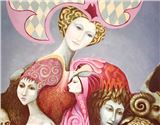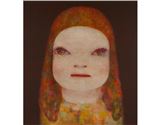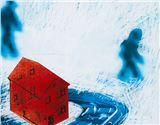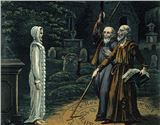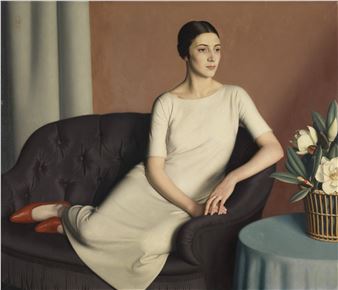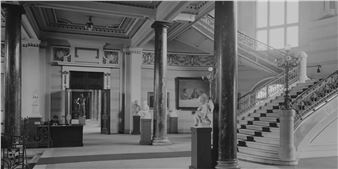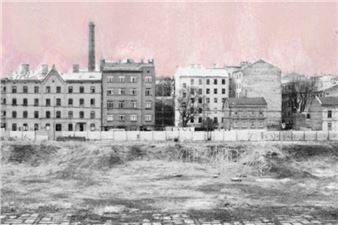Modernist and Art Deco Posters in Latvia in the 1920s–30s
From 4 March 2025 to 28 February 2026, the exhibition Modernist and Art Deco Posters in Latvia in the 1920s–30s is on view at the Romans Suta and Aleksandra Beļcova Museum in Riga (Elizabetes iela 57a, Apt. 26).
Romans Suta and Aleksandra Beļcova Museum continues its tradition of presenting to both domestic and international visitors the vibrant innovatory side of the Latvian culture and art scene of the 1920s–30s. One of the most fervent exponents of Classical Modernism, Romans Suta (1896–1944) was an artist of a universal disposition who believed that art should encompass and build links to all fields of life of the newly-established state. In the interwar period, the poster was also actively used as a special form of expression by his colleagues in the Riga Group of Artists.
Reviewing the entirety of posters and advertisements produced in Latvia in the interwar years, the scene is diverse. Posters were made by famous artists and outstanding graphic designers that nevertheless were unknown to the broader public as well as complete amateurs. Posters of high artistic quality in Avant-garde and the then-popular Art Deco stylistics have been designed here, standing as equals among the best international examples.
In the first half of the 1920s, Latvia faced economic collapse brought by World War I, at the same time artists were returning from evacuation in Russia, inspired by the ideas of the leftist Avant-garde, which today is counted among the Classical Avant-garde. The posters they created can be seen as active artistic experiments. Several members of the Riga Group of Artists supported social-democratic ideas and their political – predominantly election – posters are socially biting. In this respect, particularly noteworthy are Jānis Liepiņš’ works from the first years of Latvian independence in which he consistently uses the colour combinations, exaggerated scale, heightened, even affected emotions favoured by the constructivists. Posters in the early days of the Latvian state were also designed by one of the brightest representatives of the Riga Group of Artists, Jēkabs Kazaks. Drawing inspiration from modern art movements and ideas of the Avant-garde, he found brilliant graphical solutions which impeccably fulfilled their task of advertising events, goods, and services.
A characteristic mark of the posters from the interwar period is the artists’ relationship with typefaces. Mostly, original fonts were drawn; in posters they not only became subordinate informative elements but also played an independent role in the work’s overall composition. Modernists were especially striking and brave in their use of text, on occasion giving each letter its own shape, size, and slope. Thus, the poster for the first exhibition of the Riga Group of Artists consists entirely of abstract planes and expressive letter combinations.
The Art Deco style reached Latvian posters in the 1930s, when the active modernist period had already subsided. Among members of the Riga Group of Artists, exemplary posters continued to be made by Sigismunds Vidbergs, who was gifted with a refined graphic designer’s sensibility, and Niklāvs Strunke, although the changes in the means of expression that they employed are visible. Dynamic, diagonal compositions, large fields of contrasting colours are used, the imagery, although stylised and generalised, has become less abstract, typefaces and texts are arranged in considered, perfectly elaborated compositions.
If French poster design takes pride in the “four musketeers” (Cassandre, or Adolphe Jean-Marie Mouron, Charles Loupot, Jean Carlu, Paul Colin), in Latvia there are the three masters of graphic design whose names today are known only to a narrow circle of specialists. The biographies of Alfrēds Švedrēvics, who worked with the advertising agency Zvans, established in 1921, and Raimonds Šiško, who opened his own advertising office in the 1930s, are almost legendary. Šiško was a member of the Riga Graphics Association and actively participated in its art exhibitions yet the best part of his work is with posters. Oskars Šteinbergs’ oeuvre is a surprise – his talented and professionally executed compositions characterise the new Zeitgeist with unbelievable precision.
The exhibition includes works from the collections of the National Library of Latvia and Zuzeum Art Centre as well as materials – samples of the products advertised in the posters – from the collection of the Museum of the History of Riga and Navigation, planning a change of display midway through the exhibition.

Recommended for you
From 4 March 2025 to 28 February 2026, the exhibition Modernist and Art Deco Posters in Latvia in the 1920s–30s is on view at the Romans Suta and Aleksandra Beļcova Museum in Riga (Elizabetes iela 57a, Apt. 26).
Romans Suta and Aleksandra Beļcova Museum continues its tradition of presenting to both domestic and international visitors the vibrant innovatory side of the Latvian culture and art scene of the 1920s–30s. One of the most fervent exponents of Classical Modernism, Romans Suta (1896–1944) was an artist of a universal disposition who believed that art should encompass and build links to all fields of life of the newly-established state. In the interwar period, the poster was also actively used as a special form of expression by his colleagues in the Riga Group of Artists.
Reviewing the entirety of posters and advertisements produced in Latvia in the interwar years, the scene is diverse. Posters were made by famous artists and outstanding graphic designers that nevertheless were unknown to the broader public as well as complete amateurs. Posters of high artistic quality in Avant-garde and the then-popular Art Deco stylistics have been designed here, standing as equals among the best international examples.
In the first half of the 1920s, Latvia faced economic collapse brought by World War I, at the same time artists were returning from evacuation in Russia, inspired by the ideas of the leftist Avant-garde, which today is counted among the Classical Avant-garde. The posters they created can be seen as active artistic experiments. Several members of the Riga Group of Artists supported social-democratic ideas and their political – predominantly election – posters are socially biting. In this respect, particularly noteworthy are Jānis Liepiņš’ works from the first years of Latvian independence in which he consistently uses the colour combinations, exaggerated scale, heightened, even affected emotions favoured by the constructivists. Posters in the early days of the Latvian state were also designed by one of the brightest representatives of the Riga Group of Artists, Jēkabs Kazaks. Drawing inspiration from modern art movements and ideas of the Avant-garde, he found brilliant graphical solutions which impeccably fulfilled their task of advertising events, goods, and services.
A characteristic mark of the posters from the interwar period is the artists’ relationship with typefaces. Mostly, original fonts were drawn; in posters they not only became subordinate informative elements but also played an independent role in the work’s overall composition. Modernists were especially striking and brave in their use of text, on occasion giving each letter its own shape, size, and slope. Thus, the poster for the first exhibition of the Riga Group of Artists consists entirely of abstract planes and expressive letter combinations.
The Art Deco style reached Latvian posters in the 1930s, when the active modernist period had already subsided. Among members of the Riga Group of Artists, exemplary posters continued to be made by Sigismunds Vidbergs, who was gifted with a refined graphic designer’s sensibility, and Niklāvs Strunke, although the changes in the means of expression that they employed are visible. Dynamic, diagonal compositions, large fields of contrasting colours are used, the imagery, although stylised and generalised, has become less abstract, typefaces and texts are arranged in considered, perfectly elaborated compositions.
If French poster design takes pride in the “four musketeers” (Cassandre, or Adolphe Jean-Marie Mouron, Charles Loupot, Jean Carlu, Paul Colin), in Latvia there are the three masters of graphic design whose names today are known only to a narrow circle of specialists. The biographies of Alfrēds Švedrēvics, who worked with the advertising agency Zvans, established in 1921, and Raimonds Šiško, who opened his own advertising office in the 1930s, are almost legendary. Šiško was a member of the Riga Graphics Association and actively participated in its art exhibitions yet the best part of his work is with posters. Oskars Šteinbergs’ oeuvre is a surprise – his talented and professionally executed compositions characterise the new Zeitgeist with unbelievable precision.
The exhibition includes works from the collections of the National Library of Latvia and Zuzeum Art Centre as well as materials – samples of the products advertised in the posters – from the collection of the Museum of the History of Riga and Navigation, planning a change of display midway through the exhibition.
Related articles
From 4 March 2025 to 28 February 2026, the exhibition Modernist and Art Deco Posters in Latvia in the 1920s–30s is on view at the Romans Suta and Aleksandra Beļcova Museum in Riga.

 ARTISTS
ARTISTS
